The 10mm Auto cartridge seems to be going through a renaissance. There is new ammunition being manufactured in velocities the 10mm was intended for, like in the newer SIG Elite Performance ammo, and firearms manufacturers such as Glock and SIG have offered new pistols chambered in the round, the G40 Gen4 MOS and P220-10, respectively. We wanted to take a look at the 10mm in a full-size pistol that we could easily open-carry on the back 40 or concealed under a jacket or coat for in town. Since there are numerous examples of 10mm pistols to test, we also wanted to see if a different platform favored the big-bore caliber.
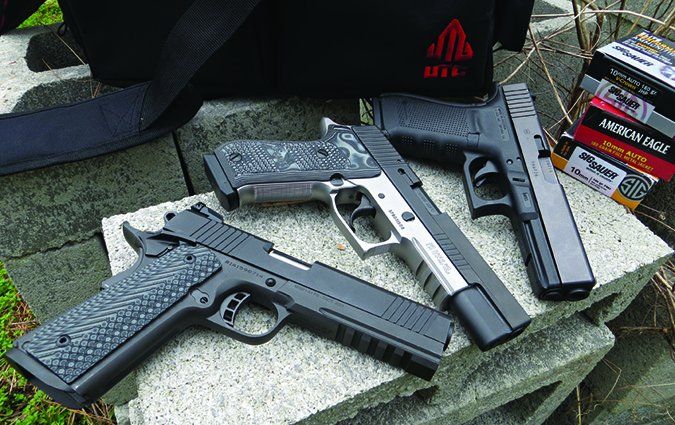
As we tested, we gained renewed respect for the 10mm round. Some testers even thought the round may be a liability in a self-defense situation due overpenetration. If we were in a crowded mall and were able to get solid center-of-mass hits on an attacker, we wondered whether certain loads would overpenetrate and hit a bystander. We do think it is a good round to punch through vehicles with and to stop big bears, and we also feel it is an excellent hunting cartridge if kept to bow-hunting distances on feral swine, whitetails, and small black bears. Around bystanders, we would most likely stick with the 10mm Lite or 10mm FBI loads if we carried the 10mm concealed.
The 10mm Auto creates a maximum pressure in the range of 37,500 psi. Compare that to the 45 ACP, which has about 21,000 psi with 230-grain ball ammo. The round was the brainchild of Jeff Cooper and a few like-minded individuals who wanted better terminal ballistics than the venerable 45 ACP could produce. The 10mm Auto exceeds 357 Magnum power and is very close to that of the 41 Magnum. The 10mm Auto is a brute of a round with the type of recoil you would expect from a magnum revolver. The mythical Bren Ten was one of the first semi-automatic pistols chambered in the round. The pistol never really lived up to its expectations due to magazine difficulties and the 10mm Auto thoroughly trouncing the Bren Ten’s mechanism. The 10mm Auto has such a fast-moving bullet that it tends wreak havoc with the pistol’s recoil mechanism. Colt first chambered its 1911 Series 80 in the cartridge in 1987, and it caused receivers to crack where the slide stop fits into the receiver. A relief cut was made by Colt to fix the situation, and the company’s pistols in 10mm ran fine thereafter. When the FBI adopted the round after the Miami-Dade shoot out in 1986 due to agents’ underperforming handgun cartridges, the Bureau soon realized agents could not or had a hard time handling the recoil of the 10mm Auto. The Bureau had adopted the cartridge first, then adopted the S&W Model 1076, which was purpose-built for the round. The FBI’s solution was to load the 10mm light, which made it more tolerable to agents. The 10mm loads became known as 10mm Lite or 10mm FBI. We all know the light 10mm load is nothing but a 40 S&W in a longer case. The 10mm Auto produces about 300 foot-pounds more energy than the 40 S&W when the 10mm Auto is loaded to its standard velocity, and it’s even hotter with niche ammo like that from Buffalo Bore. The 40 S&W changed the way law enforcement looked at cartridges, and the 10mm Auto might have been forgotten if it were not for some diehard fans — one of whom is on the Gun Tests staff.
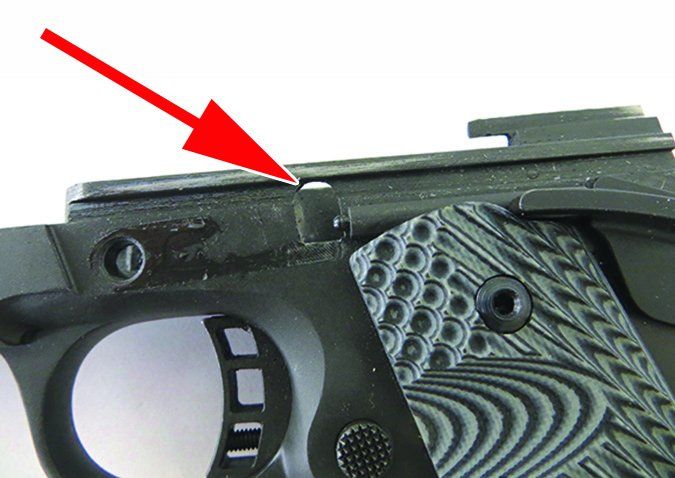
Our shooters chose three very popular platforms to test the 10mm Auto: a 1911 design from Rock Island Arsenal (RIA), the SIG P220 model, which custom gunsmiths have been converting to 10mm for years, and the large Glock frame, which has been chambered in 10mm since 1991. All of these pistols in other calibers, namely 45 ACP, have received high grades in the past from us, so our expectation was these pistols would perform, and they did. All the pistols ran exceptionally well, with no malfunctions or jams. That says a lot because some 10mm Auto pistols are finicky because factory ammo is loaded light, standard, and heavy. We used an assortment of ammo; two light loads from Federal and two standard 10mm Auto loads from SIG in the Elite Performance Ammunition line, that are much faster than the Federal’s load. The Federal loads consisted of American Eagle 180-grain FMJs which clocked slightly over 1000 fps, and Personal Protection 180-grain Hydra-Shok JHPs, which had an average muzzle velocity of slightly under 1000 fps. The SIG ammo averaged well over 1200 fps, except for the V-Crown 180-grain JHP in the Glock. The Glock showed lower velocity across the board with all the ammos compared to the SIG and RIA. Note the Glock barrel is also half an inch shorter than the RIA and SIG barrels.
We used open sights and a rest and fired at targets placed 25 yards down range. With all three pistols we could get 5-shot groups at under 2 inches. Testers felt the pistols were accurate. We also fired for speed at 10 yards to get a sense of follow-up accuracy. We found the recoil from these beasts opened up our groups. These are not pistols for those sensitive to recoil, and we don’t recommend having a new shooter start on a 10mm unless you want to cause a permanent flinch. Experienced shooters felt the pistols helped us manage recoil; in particular, the Glock and SIG did better than the RIA. As always, we also found other characteristics to love and hate. Here’s the dope:
RANGE DATA
| SIG Sauer Elite 10mm Auto 180-gr. FMJ | SIG Sauer P220-10 Match Elite | Glock G20 Gen4 | RIA Tac Ultra FS |
| Average Velocity | 1222 fps | 1200 fps | 1244 fps |
| Muzzle Energy | 597 ft.-lbs. | 576 ft.-lbs. | 619 ft.-lbs. |
| Smallest Group | 1.6 in. | 1.4 in. | 1 in. |
| Average Group | 1.9 in. | 1.8 in. | 1.6 in. |
| SIG Sauer V-Crown 10mm Auto 180-gr. JHP | |||
| Average Velocity | 1231 fps | 968 fps | 1276 fps |
| Muzzle Energy | 606 ft.-lbs. | 375 ft.-lbs. | 651 ft.-lbs. |
| Smallest Group | 1.8 in. | 0.7 in. | 1.5 in. |
| Average Group | 2.1 in. | 1.1 in. | 1.9 in. |
| Federal Premium Personal Defense 10mm Auto 180-gr. Hydra-Shok JHP | |||
| Average Velocity | 983 fps | 856 fps | 1012 fps |
| Muzzle Energy | 386 ft.-lbs. | 293 ft.-lbs. | 409 ft.-lbs. |
| Smallest Group | 1.7 in. | 0.7 in. | 0.5 in. |
| Average Group | 1.9 in. | 1.2 in. | 0.7 in. |
| Federal American Eagle 10mm Auto 180-gr. FMJ | |||
| Average Velocity | 1078 fps | 1043 fps | 1058 fps |
| Muzzle Energy | 465 ft.-lbs. | 435 ft.-lbs. | 447 ft.-lbs. |
| Smallest Group | 1.7 in. | 1.6 in. | 1.1 in. |
| Average Group | 2 in. | 2.6 in. | 1.2 in. |
| To collect accuracy data, we fired five-shot groups from a bench using a rest. Distance: 25 yards with open sights. We recorded velocities using a ProChrono digital chronograph with the first screen set 15 feet from the muzzle. | |||
Rock Island Armory TAC Ultra FS 10mm, $819
GUN TESTS GRADE: B+
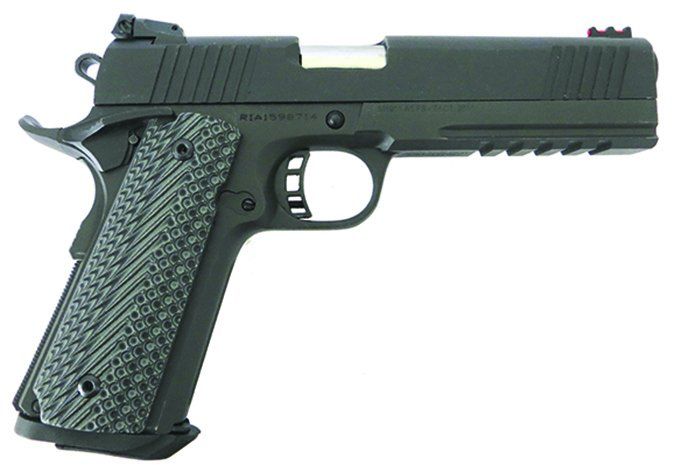
This 10mm offered lots of custom 1911 features and great accuracy at a good price.
| ACTION | Locked breech, single action semi-auto |
| OVERALL LENGTH | 8.8 in. |
| OVERALL HEIGHT | 5.5 in. |
| MAXIMUM WIDTH | 1.5 in. |
| WEIGHT UNLOADED | 32.5 oz. |
| WEIGHT LOADED | 40.9 oz. |
| BARREL | 5 in. |
| CAPACITY | 8+1 (single stack) |
| SLIDE | Parkerized, steel |
| FRAME | Parkerized, steel |
| FRAME FRONT STRAP HEIGHT | 2.3 in. |
| FRAME BACK STRAP HEIGHT | 3.2 in. |
| GRIPS | VZ Operator G-10 |
| GRIP THICKNESS (MAX) | 1.3 in. |
| GRIP CIRCUMFERENCE (MAX) | 5.8 in. |
| FRONT SIGHT | Dovetail fiber optic front |
| REAR SIGHT | Adjustable |
| TRIGGER PULL WEIGHT (SA) | 4.8 lbs. |
| TRIGGER SPAN (SA) | 2.8 in. |
| MAGAZINES | 2; steel |
| SAFETY | Ambidextrous thumb, beavertail grip |
| WARRANTY | limited lifetime |
| WEBSITE | Armscor.com |
| MADE IN | Philippines |
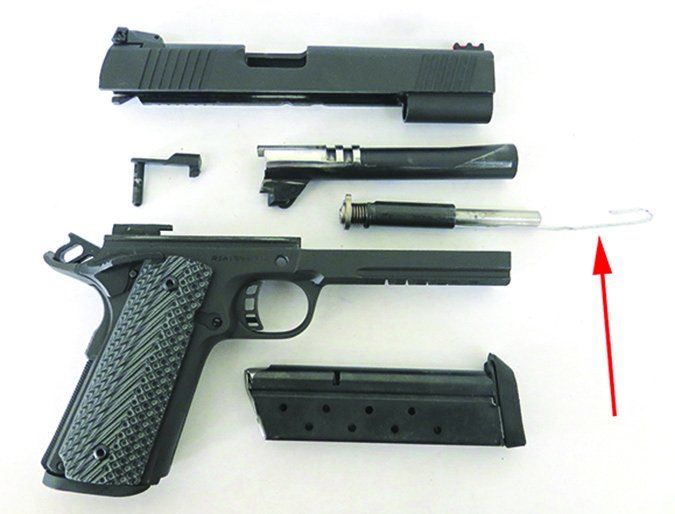
The TAC Ultra FS is manufactured in the Philippines by Armscor. Out of the box, it has a bold look due to the full dust cover and Picatinny-style accessory rail. Some testers did not like the look or how it dragged along the mouth of a holster when holstering and unholstering, but all did appreciate the extra heft the full dust cover gave the pistol. It has a rather plain, but well executed, Parkerized finish. The G10 grips offered a lot of traction, and some shooters felt they rasped their palms after extended firing. The SIG and Glock grip did not abrade the skin in the same way.
The TAC Ultra FS was equipped with all the features we have come to expect in a 1911— extended beavertail, ambidextrous thumb safety, magazine-well funnel, high traction grips, excellent sights, match-grade barrel, one-piece recoil guide rod — features normally found on high-dollar 1911 pistols. Needless to say, the 1911 fans found a lot to like in this pistol.
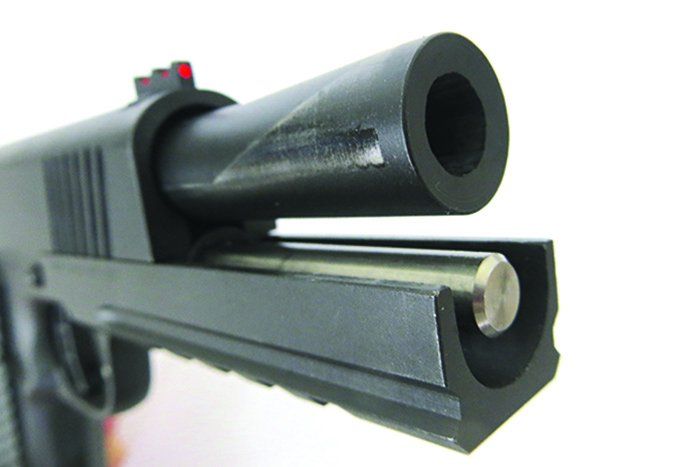
The TAC Ultra FS uses a Series 70 system, so there is no internal firing pin safety. The slide and slide stop are forged. In lieu of the traditional barrel bushing, it uses a one-piece guide rod and bull barrel that locks up at the muzzle with a tight fit in the slide to aid accuracy. It also requires a paperclip to field strip. The SIG and Glock do not require a tool to field strip. The barrel is stainless steel with a built-in feed ramp like a Clark Custom barrel. The integral ramp fully supports the case, so there is no gap between the frame and barrel for bullet noses to get hung up on.
The slide serrations were angled at the front and rear and gave good traction when racking the slide. The top of the slide is domed, like old-school GI-style pistols, with the red fiber-optic front sight dovetailed in place, as was the dehorned adjustable two-dot rear sight. We found the TAC FS shot high out of the box and needed to be cranked down. The rear sight was flush with the rear of the slide for maximum sight radius. The adjustment clicks were precise. In use, the sights on the RIA offered the best sight picture, followed by the SIG and then the Glock.
Serrations on the front grip strap and a checkered polymer main spring housing helped provide a solid grip, while the upswept beaver tail allowed a higher grip on the pistol with no hammer bite. The speed bump on the grip safety was oversized, so a less-than-perfect grip will still deactivate the grip safety. The skeletonized hammer has plenty of grip to cock and uncock the hammer. The extended ambidextrous safety flicked on and off with precise clicks. The trigger was also skeletonized and was adjustable for overtravel. Vertical serrations on the trigger face keeps your finger on the trigger, even under recoil. The trigger had a slight bit of take up and a bit of creep before it broke, on average, at 4.8 pounds.
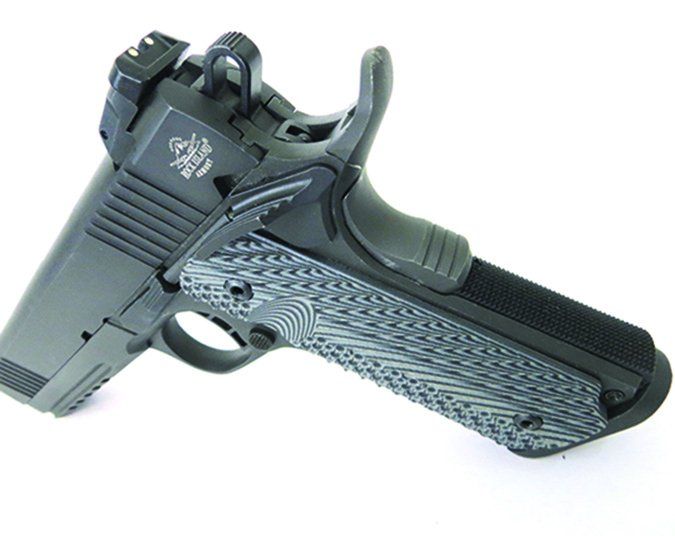
The aggressively textured VZ Operator II grips have a golf-ball pattern near the outer edge of the grip and near the front strap and deep diagonal cuts on the rest of the grip. A thumb-recess notch allows better access to the magazine release. Some testers thought the grips were too raspy for the 10mm recoil. A magazine funnel on the butt of the receiver is held down by the grip-panel screws. The funnel ensured faster reloads and required base pads on the magazines so they could be slammed home with the palm of our hand. Two 8-round magazines with metal bodies and followers and rubber base pads came with the pistol. Loading these magazines was easy on the thumbs.
Disassembly requires a paperclip to trap the recoil spring guide, which can be a pain, especially at the range or in the field where a paper clip may not be available.
All ammunition cycled flawlessly through the RIA. We also found that the TAC FS was very accurate. One tester was able to group six of the eight holes touching, creating one large hole. We did have to tighten the grip screws after about 200 rounds, but that should easily be part of your maintenance procedure.
Our Team Said: Recoil was very controllable, with the extended dust cover helping to reduce muzzle flip, though some felt the grips were raspy. Accuracy was the best of all three pistols tested. The paperclip to disassemble was an extra tool to carry, and the price seemed very fair for how well this 1911 was equipped.
SIG P220-10 Match Elite 10mm, $1417
GUN TESTS GRADE: B
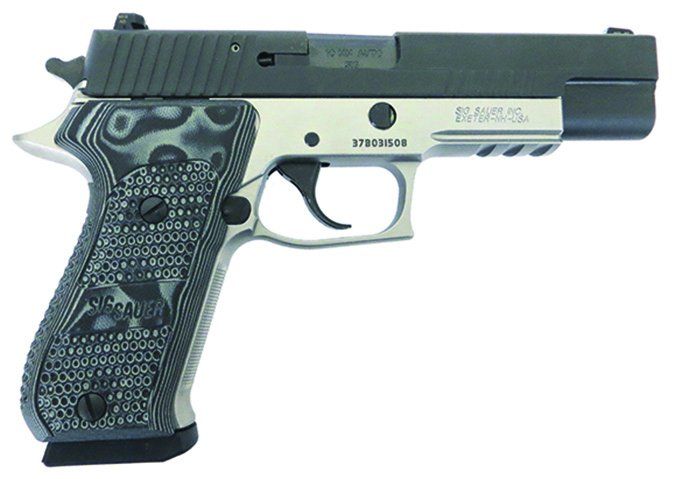
Diehard SIG fans liked this pistol. It was refined and pleasant to shoot, but very expensive compared to the others. Best suited for hunting or target shooting.
| ACTION | Locked breech, SA/DA, semi-auto |
| OVERALL LENGTH | 8.7 in. |
| OVERALL HEIGHT | 5.7 in. |
| MAX WIDTH | 1.2 in. |
| WEIGHT UNLOADED | 44 oz. |
| WEIGHT LOADED | 52.4 oz. |
| BARREL | 5 in. |
| CAPACITY | 8+1 (single stack) |
| SLIDE | Matte black, steel |
| FRAME | Matte stainless steel |
| FRAME FRONT STRAP HEIGHT | 2.3 in. |
| FRAME BACK STRAP HEIGHT | 3.2 in. |
| GRIPS | G-10 Piranha |
| GRIP THICKNESS (MAX) | 1.3 in. |
| GRIP CIRCUMFERENCE (MAX) | 5.8 in. |
| SIGHTS | SIGLite 3-dot night sights |
| TRIGGER PULL WEIGHT (DA) | 8.6 lbs. |
| TRIGGER PULL WEIGHT (SA) | 4.5 lbs. |
| TRIGGER SPAN DOUBLE ACTION | 3 in. |
| TRIGGER SPAN SINGLE ACTION | 2.7 in. |
| MAGAZINES | 2; stainless steel |
| SAFETY | Decocker |
| WARRANTY | Limited lifetime |
| WEBSITE | SIGSauer.com |
| MADE IN | USA |
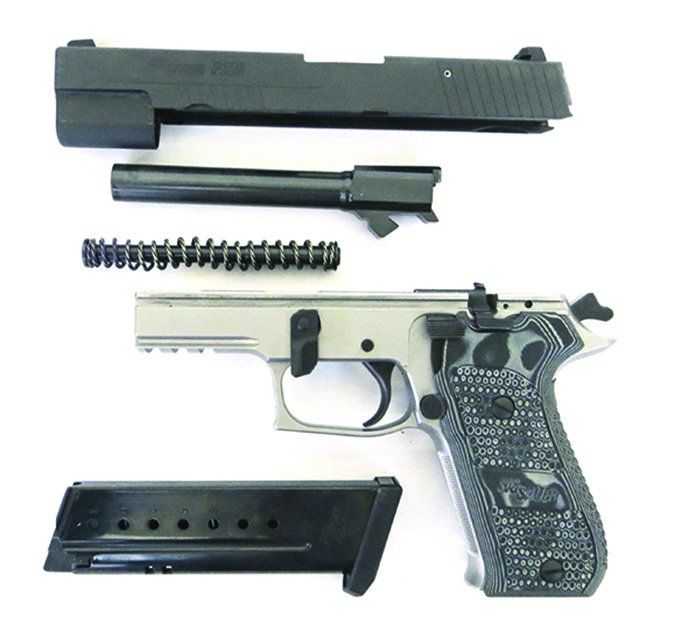
The P220-10 is a refined and substantial pistol weighing in at 52.4 ounces with a loaded magazine. The weight really helped to reduce felt recoil, as our testers soon found out. It uses a full-mass slide to help combat recoil. Other P220 slides have lightening cuts, depending on the model variant. Out of the box, the Reverse Two-Tone Stainless finish was impeccable and looked sharp with the green toothy G10 Piranha grips. In hand, the SIG did not have the girth of the Glock, which felt chunky in hand and was harder for shooters with small hands to control. The RIA had a similar girth as the SIG due to the grip panels, which could be adjusted with aftermarket grips but at an additional cost.
The SIG’s slide was finished in matte black finish and equipped with SIGLite three-dot night sights with tritium inserts. We found the sights were large and easy to use. Slide serrations are angled and placed forward and aft. They offered a positive grip to rack the slide. The matte-stainless receiver has checkering on the front grip strap, and the backstrap is formed by the grips. It was contoured to better fit your hand and offered a positive grip with no abrasion. The grips had a golf-ball-dimple texture on the sides and a backstrap that sticks to your hand, but does not abrade your skin during recoil. Testers with small-to-average-sized hands could comfortably grip and fire the pistol without the pistol shifting in their grip during recoil. The trigger guard was undercut in the rear, and with the semi-beavertail, it allowed testers to grip the pistol higher and closer to the bore’s axis, thus there was less felt recoil. An accessory rail gave users the opportunity to mount accessories. It was smoother and less toothy than the rail on the RIA, we thought.
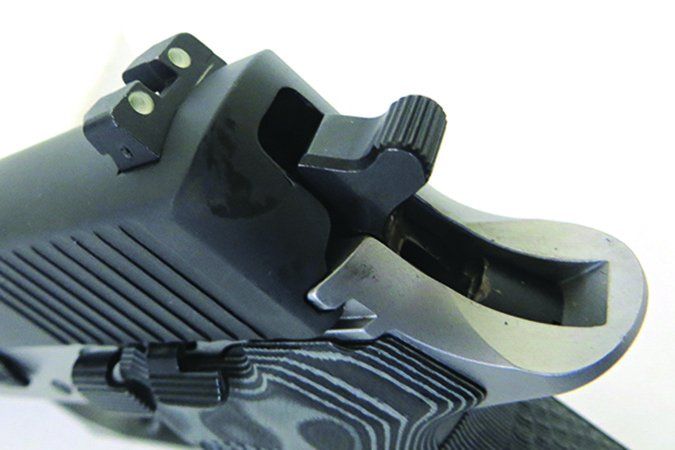
The SIG is traditional, using a double-action/single-action trigger. The first shot is fired DA with a long smooth press followed by SA mode. Both trigger modes were crisp. DA pull averaged 8.6 pounds but felt lighter, and SA was 4.5 pounds on average. Located on the left side of frame was a decocker; the only manual safety on the pistol that safely decocks the pistol from SA to DA. The SIG also incorporated a firing pin block. The pistol will fire with the magazine removed. A loaded-chamber indicator tells shooters a cartridge or a case is in the chamber. Field stripping does not require tools and is fast.
The magazines are made of steel with a polymer follower and floorplate pad. Witness holes indicating how many rounds remain were marked on the exterior. Loading the magazine was easy on testers’ thumbs.
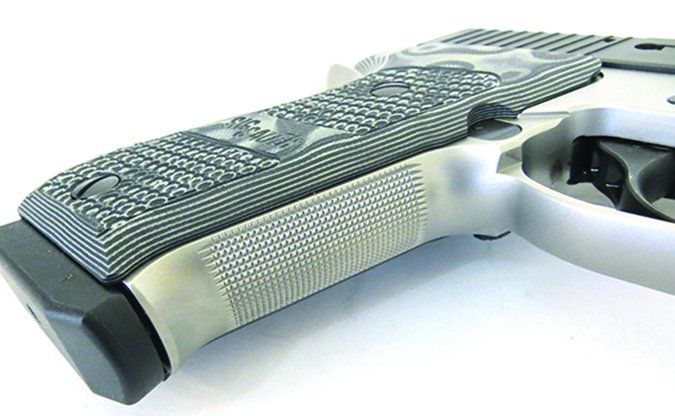
At 25 yards, testers found the SIG was easy to shoot averaging five-shot groups at two inches. Recoil was quite controllable, which testers attributed to the pistol’s weight. Some likened the recoil to a .45 ACP +P.
Our Team Said: This is more of a hunting pistol because it was large and heavy for concealed carry. We would own one in a heartbeat — except for the price. So for those readers who don’t want us to factor money into the grade, just buy this one.
Glock G20 Gen4 10mm, $687
GUN TESTS GRADE: A-
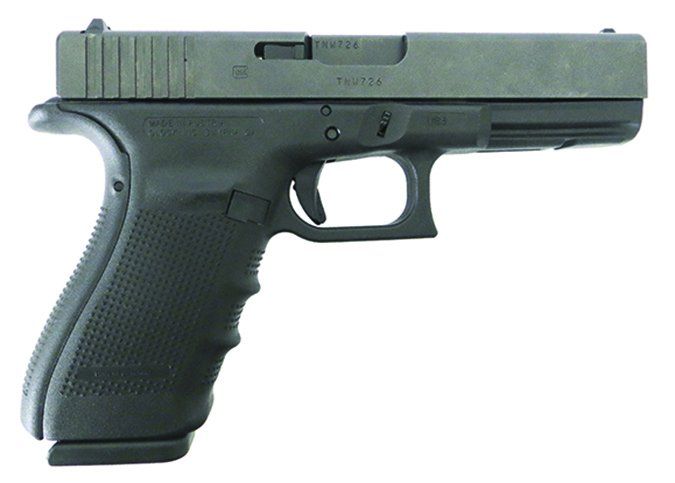
This G20 offered the most DIY customization, was the softest shooter and was accurate, plus the price was less. Also, it was the best suited for concealed carry.
| ACTION | Semi-auto, locked breech DAO |
| OVERALL LENGTH | 8 in. |
| OVERALL HEIGHT | 5.5 in. |
| MAX WIDTH | 1.3 in. |
| WEIGHT UNLOADED | 30.7 oz. |
| WEIGHT LOADED | 39.5 oz. |
| BARREL | 4.6 in. |
| CAPACITY | 15+1 |
| SLIDE | Black, steel |
| FRAME | Black, polymer |
| FRAME FRONT STRAP HEIGHT | 2.6 in. |
| FRAME BACK STRAP HEIGHT | 3.6 in. |
| GRIPS | Textured polymer w/ finger grooves |
| GRIP THICKNESS (MAX) | 1.3 in. |
| GRIP CIRCUMFERENCE (MAX) | 6.3 in. |
| FRONT SIGHT | Fixed dot |
| REAR SIGHT | Outline, driftable |
| TRIGGER PULL WEIGHT | 5.5 lbs. |
| TRIGGER SPAN | 2.9 in. |
| MAGAZINES | 3; polymer |
| SAFETY | Trigger lever |
| WARRANTY | 1 year limited |
| WEBSITE | US.Glock.com |
| MADE IN | Austria |
The G20 Gen4 is the latest evolution of Glock pistols with replaceable back straps to fit a variety of hand sizes. Testers liked the ability to swap back straps; four sizes came with the pistol or the pistol could be used without a back strap, so five possible grip configurations are available. Some testers with smaller hands thought the Glock still felt a bit chunky in the hand compared to the other pistols.
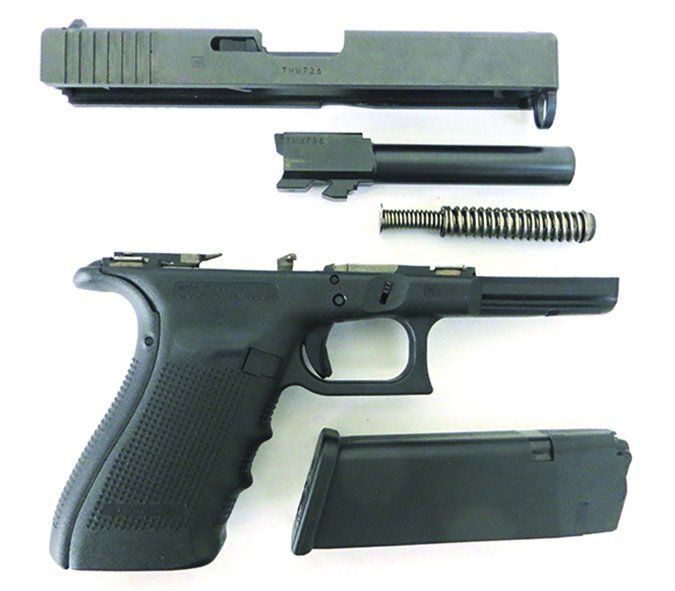
The accessory rail on the G20 Gen4 was smooth, which made it easier to holster. In fact, testers felt the G20 was the most comfortable 10mm to carry due to its light weight of only 39.5 ounces loaded. The G20 also has the three safety features: trigger, firing pin, and drop safety. This is a very safe pistol.
The sights on the Glock are serviceable, but were the least liked by testers. The plastic front used a dot with the plastic rear sight outlined. The target picture was fine, but we preferred the sights on the other two pistols. Glock sights are easily replaced ($10-$32), and there are numerous aftermarket sights which still cost more, bringing the Austrian entry in line with the cost of the RIA but still well under the SIG.
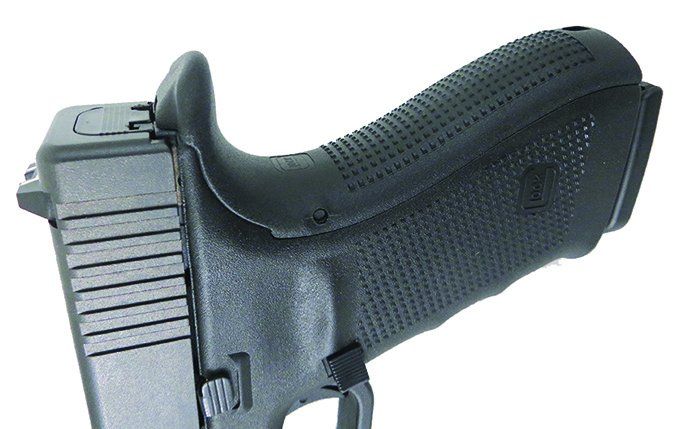
The trigger was typical Glock, with a pull weight of about 5.5 pounds. It is a trigger we have come to accept or enhance with drop-in aftermarket trigger kits. The Glock we felt was more easily customized by the owner than the RIA or SIG, and that was a plus. In fact, our test pistol was owned by one of our staff, who also had an extra 6-inch hunting barrel ($150), which added to the total cost of the pistol, yet still put its total cost well under the cost of the SIG and near the cost of RIA.
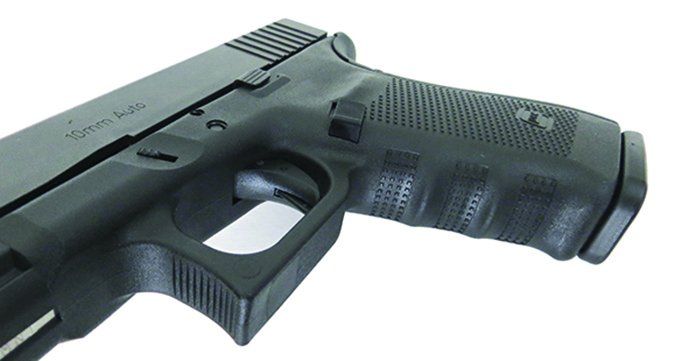
The longer barrel allowed the Glock to generate more velocity with the 10mm ammo, averaging about 30 fps extra per load, but when we reviewed the range data, the Glock data was still lower than the other two pistols, even with the addition of a 6-inch barrel. Data still showed the Glock lagging behind the velocity of the RIA and SIG. We were had hoped the 6-inch hunting barrel would eke out more velocity, but it essentially leveled the velocity playing field between the pistols, while adding length to the Glock.
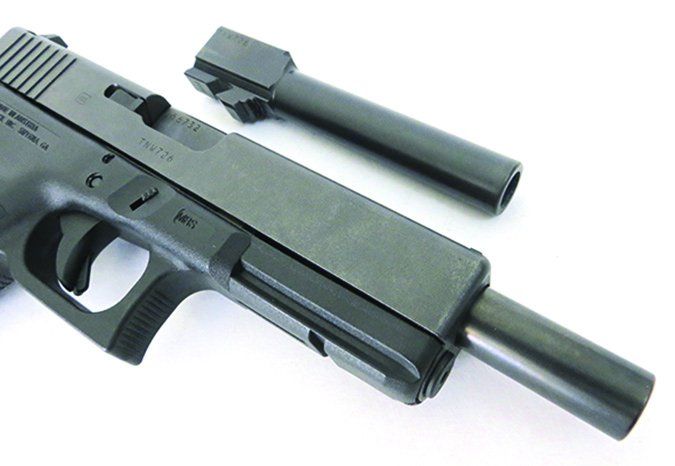
At the range, we found the Glock provided the second-best accuracy, on average, of the three pistols. With the defense loads — Federal Hydra-Shok and SIG V-Crown — the best 5-shot group was tied at 0.7 inches. Testers felt the Glock was also the softest shooting of the pistols, hands down. The polymer frame of the G20 flexed to help absorb recoil, while the slightly fatter grip had more contact with the palm, so recoil was more spread out.
Our Team Said: The Glock was the softest shooter, and its price was the least of all three pistols. The girth was larger, but manageable, and the trigger was a Glock trigger that could be improved with an aftermarket kit. Plus there are numerous other parts to customize the pistol.
Written and photographed by Robert Sadowski, using evaluations from Gun Tests team testers.
Special thanks to Eastern Outfitters of Hampstead, North Carolina, for their assistance.




























